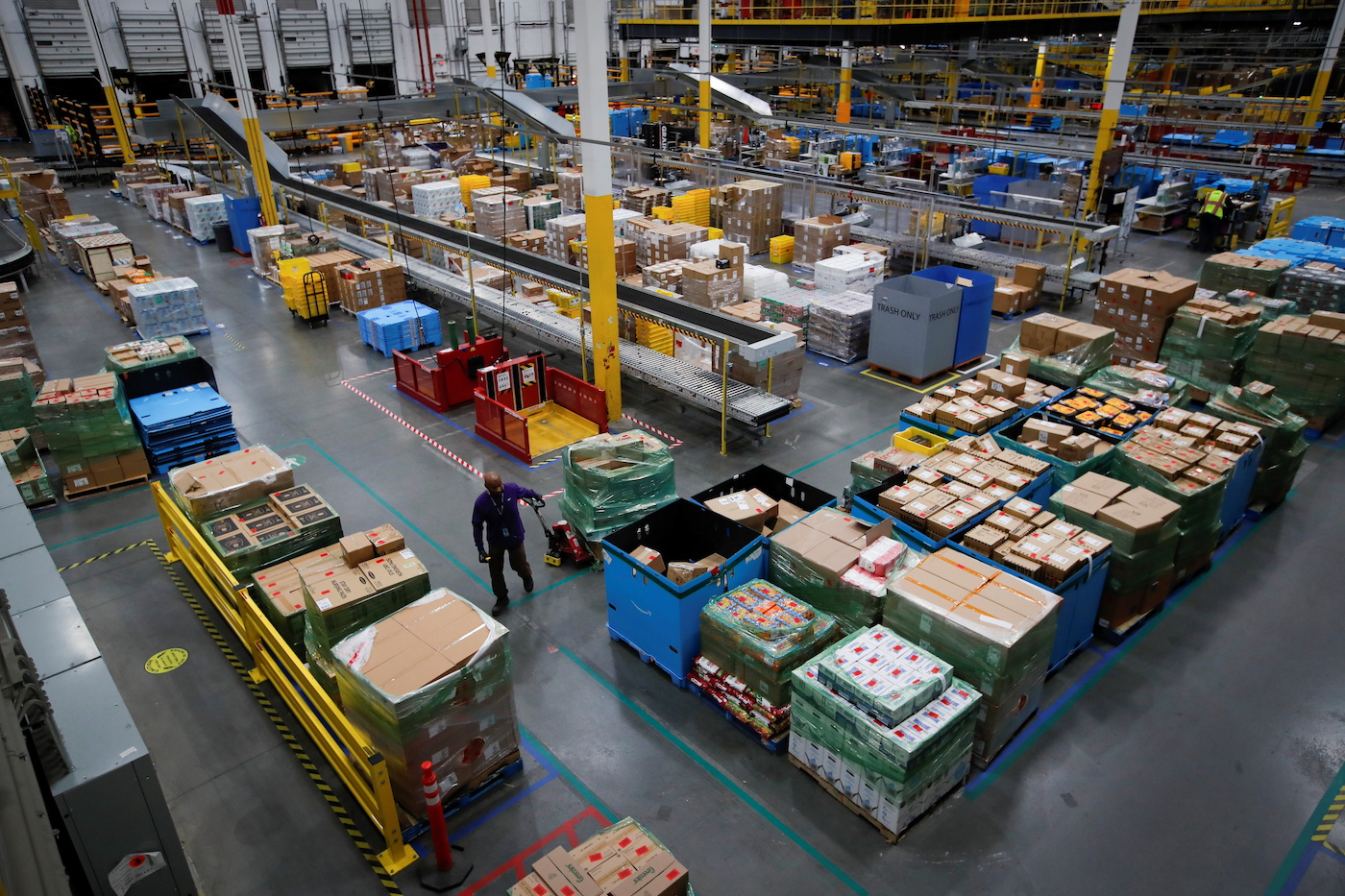During and after the pandemic, more businesses than ever moved most or all of their sales online or closed altogether, leaving behind a large number of empty retail spaces in shopping malls and elsewhere. For example, in June 2021, Washington Prime Group, a shopping mall real estate company that owns 102 locations around the US filed for Chapter 11 bankruptcy protection, leaving space for e-commerce firms to potentially move their inventory and fulfillment operations in.
While the use of mall space for traditional storefront sales may have declined since the pandemic, the demand for e-commerce is still on the rise. By 2023, the retail e-commerce market is expected to reach $6.3 trillion.
The rise of retail-to-industrial properties
A prime example of catering to ever-growing customer demand while keeping costs down lies in the real-estate space for retailers. To fill the rising gaps in shopping malls, many mall owners are converting the empty spaces into fulfillment centers for shipping out orders. Shopping malls are typically located in populated areas with spacious parking, and many are often equipped with loading dock spaces. Restructuring these spaces into fulfillment centers requires minimal spending.
Projects are already underway to convert an approximate 14 million sq ft retail space into 15.2 million sq ft of industrial space. According to CBRE, 59 such projects have already been completed, proposed or are underway since 2017.
Utilizing mall space for fulfillment
Simon Property Group (SPG) – a real estate investment trust that owns 119 traditional malls and 69 premium outlets in the United States – is offering its spaces to serve as mini-fulfillment centers to various companies, including Amazon. It is unclear, however, if Amazon is utilizing the mall space for fulfillment needs ever since both companies put it on the table in 2020.
DHL and FedEx (FDX) are also actively considering utilizing mall spaces as their last-mile delivery centers. To fulfill their online orders, Costco and Target are also using large mall retail spaces.
In 2022, Brookfield Properties Concierge Services launched fulfillment services with Sephora. The concierge service is an app-operated curbside pickup system that informs customers to pick up their order when it’s ready. When the customer arrives, they inform the retailer on the app, and their order is handed over at the curbside of the store. This is a unique model where a mall and its technology partners are directly involved in handling curbside orders for the beauty store – an example of an efficient system that helps with quicker order fulfillment using mall space while distinguishing it from other curbside pickup services.
Shipping from retail stores
In an effort to cut down costs and utilize the existing space, many companies are now shipping orders from their retail stores. Considering a large portion of their inventory sits in their retail stores, it makes sense that companies such as Target (TGT), Walmart (WMT), Walgreens (WBA), and CVS (CVS) now ship orders to people’s homes from their stores.
With the ever-expanding world of e-commerce and fierce competitors like Amazon, utilizing store space for shipping orders to customers is a smart move. It not only promises faster delivery times but is also cost-effective compared to managing a warehouse.
Walmart is setting an example and has turned into a strong e-commerce competitor through its expansive efforts in the U.S.. Today, the company has 4,700 stores located within a ten-mile vicinity of 90% of the population. Top analysts are currently bullish on Walmart stock. Being a dividend aristocrat, Walmart stock has shown long-term financial stability, with 50 consecutive years of dividend increases.
Other companies such as DSW are aiming to create the “store of the future” where 20,000 to 25,000 square foot stores will be converted into 15,000 square foot locations with a large amount of extra space used for order fulfillment. In 2021, DSW fulfilled nearly 60% of the online orders from its stores. It’s not a surprise considering the company’s annual revenue for 2021 was $3.2 billion – a 43.04% growth from the previous year.
Bigger retail stores such as Macy’s (M) are also utilizing their huge square footage spaces as micro-distribution centers. With nearly 300 Macy’s facilities shipping orders from its stores, the company has strong access to American consumers, fulfilling their orders online quickly and efficiently.
Target (TGT) recently announced a $100-million investment to expand next-day delivery capabilities. The company plans to add nine to 15 new sorting centers by 2026. Utilizing a stores-as-hubs strategy, Target can efficiently sort its orders in multiple stores at any given time. Over the past month, the retailer had lost 13.22% in its stock value, but recently outpaced the S&P 500’s daily gain of 0.02%. Currently, Zacks ranks target at #3 (Hold).
Costco (COST) recently announced that it plans to open a 241,342 square-foot facility in Fresno California. 47,000 square feet of the space is expected to be dedicated to an e-commerce micro-fulfillment warehouse. A popular momentum stock, Costco holds a Momentum Style Score of A. It also ranks at #3 (Hold) for Zacks Rank. Over the past four weeks, the stock has seen a 3.9% increase.
The next decade will see a massive shift in fulfillment practices as companies continue to utilize mall spaces for shipping orders. Large retail stores will also dedicate square footage within their stores to act as micro-fulfillment centers.
The views and opinions expressed herein are the views and opinions of the author and do not necessarily reflect those of Nasdaq, Inc.
Image and article originally from www.nasdaq.com. Read the original article here.

